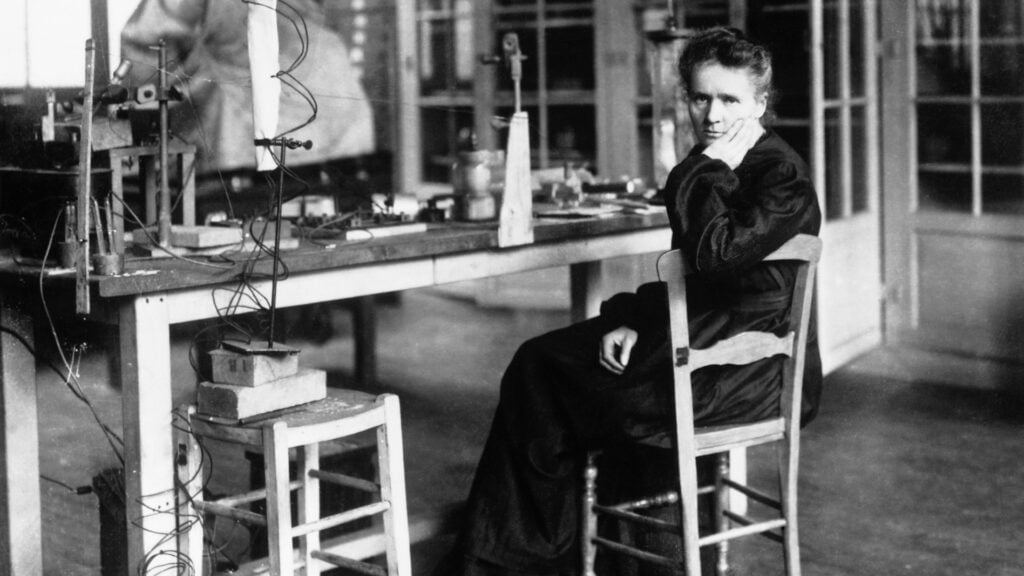Radium is a chemical element with the atomic number 88 and the symbol Ra. It is the sixth element in Periodic Group 2, also known as alkaline earth metals. Pure radium is silvery-white, but when exposed to air, it readily reacts with nitrogen, forming a black surface layer of radium nitride. Radium isotopes are all highly radioactive, with radium-226, which has a half-life of 1600 years and decays into radon gas, being the most stable. But did you know why Marie Curie carried radium vials in her pocket?
Marie Curie liked the glow of radium and kept vials of it in her pockets and next to her bed. Marie Curie’s body remains radioactive more than 80 years after her death.
The Radium Discovery
After discovering radium in 1898, Curie and Pierre refused to pursue a patent for it and profit from its production, despite having barely enough money to purchase the uranium slag required to extract the element. The Curies, on the other hand, generously shared the isolated product of Marie’s difficult labors with fellow researchers and openly shared the secrets of the process required for its production with interested industrial parties.
During the ongoing Radium Boom, factories sprang up in the United States to supply the element to the scientific community and the curious and gullible public. The glowing green material captivated consumers and found its way into everything from toothpaste to sexual enhancement products, even though it is still not fully understood. By the 1920s, the price of a single gram of the element had risen to $100,000, and Curie could no longer afford to purchase enough of the very thing she had discovered to continue her research.
Radium is a natural element that belongs to people. Radium was not intended to enrich anyone.
Marie Curie, Polish-French Physicist, Nobel Prize Winner
(Source: Biography)
Did the Radium Vials bring on Marie Curie’s Illness?
Once, a vial of the substance was fastened to Pierre’s bare arm for ten hours to observe the peculiar way it painlessly burned his flesh. Pierre enjoyed carrying a vial in his pocket to show inquisitive people the substance’s glowing and heating capabilities. Then, as a nightlight, Marie kept a sample of the substance in her house next to her bed. The Curies were diligent researchers who spent practically every day in the confines of their makeshift laboratory, which was filled with radioactive materials. Both were alleged to have gotten shaky hands and cracked, scarred fingers from handling Radium samples frequently.
Pierre’s life was tragically cut short in 1906, but he was in constant pain and fatigue at his death. Marie, too, suffered from similar symptoms until she died of advanced leukemia in 1934. They never considered the possibility that their discovery was the source of their pain and Curie’s death. The couple’s laboratory notes and many personal belongings are still radioactive and cannot be viewed or studied safely today. (Source: Biography)
Image from LiveScience
